|














- Palisades Office:
- 910 Via de la Paz
- Pacific Palisades, CA
- (310) 454-5521
- Studio City Office:
- 12229 Ventura Blvd.
- Studio City, CA
- (818) 623-8900
-
-
| |
What is Dry Eye Syndrome?
|

|
Dry Eye is
actually a collection of symptoms that make up an eye condition
that stems from an imbalance in the quantity or quality of tears.
These symptoms include dry, red, gritty, and even watery eyes. Often,
Dry Eye sufferers report the feeling of something foreign within the
eye or eye strain. What Causes Dry Eye Syndrome?
What Causes Dry Eye Syndrome?
The moisture level in the eye is maintained by the
balance of tear production and tear loss through drainage and
evaporation. When this balance is not sustained, dry spots appear
on the surface of the eye and cause irritation.
 Can
Watery Eyes Be a Symptom of Dry Eye Syndrome? Can
Watery Eyes Be a Symptom of Dry Eye Syndrome?
Yes. As odd as it sounds, many
Dry Eye sufferers experience ‘wet eyes’ due to the tear glands
overproducing watery or reflex tears to compensate for a lack of a
balanced tear film. |
 How Do
Tears Function? How Do
Tears Function?
Tears bathe and lubricate the eyes.
Each time you blink, new tears are formed in the several glands
located around each eye. A healthy tear film consists of a
delicate balance of three layers:
 Outer Lipid (Oily) Layer
- which reduces evaporation of the watery layer of
tears.
Outer Lipid (Oily) Layer
- which reduces evaporation of the watery layer of
tears.
 Middle
Aqueous (Watery) Layer - which consists of 98% water, and
cleanses the front surface of the eye. Middle
Aqueous (Watery) Layer - which consists of 98% water, and
cleanses the front surface of the eye.
 Inner
Mucin (mucus) Layer - which stabilizes the tear film. Inner
Mucin (mucus) Layer - which stabilizes the tear film.
|
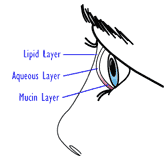 |
 Can Dry Eye Syndrome
Affect My Ability to Wear Contact Lenses? Can Dry Eye Syndrome
Affect My Ability to Wear Contact Lenses?
Yes. Dry Eye Syndrome is the leading cause
of contact lens intolerance or discomfort. Contacts can cause
tears to evaporate from the eyes causing irritation, protein deposits,
infection and pain. |
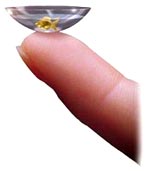
|
|
 How is Dry Eye Syndrome Diagnosed?
How is Dry Eye Syndrome Diagnosed?
Dr. Sawusch can perform some simple in-office
diagnostic tests to evaluate the quality and quantity of your tears. General
health, medications and environmental factors will be a consideration in
diagnosing Dry Eye.
 How is Dry Eye Syndrome Treated?
How is Dry Eye Syndrome Treated?
Depending on the causes, Dry Eye Syndrome can be
treated as a temporary problem or a lifelong disease requiring long-term
treatment. Either way, tears must be conserved or replaced in order to
provide relief.
 Replacing the Tears:
Replacing the Tears:
Artificial tears are probably the most common
form of treatment for Dry Eye Syndrome. These will provide temporary relief,
but usually have to be applied several times per day
 Conserving the Tears:
Conserving the Tears:
In cases of persistent Dry Eye symptoms, permanent,
reversible closure of the tear duct or punctal occlusion, may be the
best solution. Punctal occlusion allows you to retain your own, natural
tears without the bother or expense of constantly replacing the tear film
with artificial tears. |
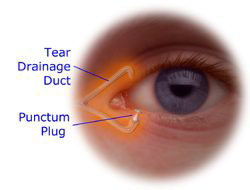 |
 How Can Punctal Occlusion Help Me Keep My Natural Tears?
How Can Punctal Occlusion Help Me Keep My Natural Tears?
Punctal occlusion acts very much like a stopper in a sink.
When the punctal opening is closed, tears stay on the eye longer. There are
two basic methods of tear duct closure:
 Cautery . Cautery .
 Punctum Plugs Punctum Plugs
|
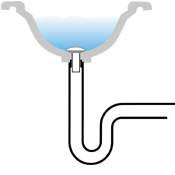
|
 What are Punctum Plugs?
What are Punctum Plugs?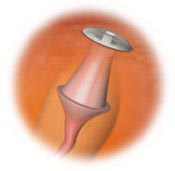
Punctum Plugs are small, soft silicone implants,
about the size of a sesame seed, which are non-surgically inserted into the
natural tear drain opening (the "punctum"). The entire procedure can be
performed in Dr. Sawusch's office within a few seconds. Many patients report
immediate relief from Dry Eye symptoms. Although silicone plugs are
considered a permanent treatment for Dry Eye, Dr. Sawusch can easily remove them
if necessary, although this is rarely required.
|